Syaran National Army
| Syaran National Army | |
|---|---|
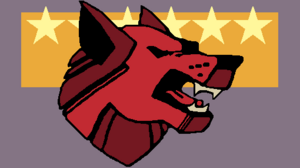 Insignia of the Syaran National Army | |
| Founded | 1988 |
| Country | |
| Type | Army |
| Size | 650,000 active duty 2,350,000 reservists 3,000,000 total |
| Part of | SNA Central Command |
| Garrison/HQ | Zovahr |
| Motto(s) | Unrivaled |
| Engagements | Imerti Conflict Zemplen War |
| Commanders | |
| Commander-in-Chief | Anita Beleska |
The Syaran National Army is the land component of the Syaran Commonality Armed Forces. Founded in 1988 with the rest of the VZS, the Syaran National Army is the largest branch of the Syaran military and most funded. Counting both regular and reserve personnel it is the largest army in all of Tyran. The Syaran National Army inherited much of it's organizational culture, doctrine, and equipment from the Army of the Syaran Republic.
History
Founded in 1988 aong with the rest of the VZS, the Syaran National Army inherited much of it's equipment and organizational aspects from the defunct Army of the Syaran Republic. Under the leadership of SNA Central Command, the Syaran Army began the long process of reconstituting itself in the aftermath of the Refusal War.
The SNA in the early 1990s faced the daunting prospect of scaveging what remained of the pre-war Syaran Army arsenal. While much of it was in tatters and dissarray, the SNA Central Command deduced that Syara's domesticly designed equipment would suffice for it's purposes and set about rekindling Syaran arms manufacturing. Between 1990-1994 the SNA identifed production and modernization of small arms, artillery, and air defense systems to be highest priority, followed by armored fighting vehicles and utility vehicles.
Some programs were relatively minor in scope. Uprgades to Syara's P-series of assault rifles were largely cost effective measures and manufacturing decisions, switching from stainless steel to polymers and composite materials to save space and money. The P-91 sidearm, the P-20 combat shotgun, and P-95 assault rifles were essential makeovers of older models. Production of the PH-250 general purpose machine gun and hte PH-14 sniper rifle focused more on modernized practices in light of Syaran experience in the Refusal War. The biggest changes came to more powerful weaponry, namely the Xyston shoulder fired rocket launcher, the Icarus man portable air defense system, and the Falx anti-tank guided missile. These three weapon systems were the most significant alterations to Syaran infantry, upgraded from the Republic's reliance on rocket-propelled grenades.
Artillery had been the cornerstone of the Republic's Army, and the Syaran National Army retained that mindset as it developed through the 90s. Just as the Republic had paved the way for the standardization of heavy artillery during the Divide War, the SNA sought to continue that with the prioritization of a few types of rounds. Taking note of the value of mobile fire support, the SNA began development of a family of self-proppelled artillery pieces that would replace Syara's reliance on towed guns. In order to simplify logistics, 122mm and 155mm calibers were selected as the standardized shells for Syaran fire support, to be fired from the 122mm Polcycotes and the 155 Pallas. Both build on the backs of Syara's DCA utility trucks, mass production began in the late 90s and steadily replaced the towed 155mm Porphyrion. In order to supplament it's traditional shellfire, the Cerberus rocket artillery system was desgined as well, capable of firing 107mm, 122mm, or 128mm rockets.
Although air power did not play a decisive role in the Refusal War, the SNA considered it vital to develop a proper air defense network capable of defending Syaran ground forces from aerial threats. The Republic had fielded many towed air defense guns and self-propelled anti-aircraft guns, but the desire to focus on surface-to-air missiles resulted in the production of the Pollux short range air defense missile system, which could be modified to fire 40mm anti-aircraft shells. While the SNA could be outfitted with the Daedalus mobile SAM launcher for mid-range defense, long range air defense remained in limbo until the fielding of the Calliope long range strategic air defense system, which was finally fielded in 2004 after nearly a decade in development.
Armored fighting vehicles were less of a priority for updating. Many of the Republic's armored vehicles were of sound designs that had served well in the Refusal War, and SNA Central Command did not see much reason for deviation. Only two new AFVs were introduced in the 1990s, the Phaethon APC and Myrmidon main battle tank. The Phaethon, described by the SNA as a light armored personnel carrier, was not meant to replace the older but reliable Notos but compliment it, with a smaller frame, higher speed, and better modularity. The Phaethon was produced in many variants and became primarily known for it's employment as a recon vehicle. The Myrmidon main battle tank was largely an evolution of the older Minotaur, armed with a 125mm cannon and updated optics, fire control systems, and a superior engine gave it a longer service life expectancy and robustness. It was produced in 1998 and intended to replace the Minotaur and even older Manticore, although future events would see both models pressed back into service.
The rebuilding of the SNA, and the VZS at large, was complete by 2002. While the VZS had modernized, Syara had undergone an economic boom that had placed it's economy as the 5th largest in Tyran, and the second largest in Siduri after Cacerta. Syara's return as a regional power, built on the Commonality's economic might, even began to get the question whether Syara's 400,000 man army was truly necessary.
Deteriorating relations with neighboring Ruvelka provided the answer. Although the Commonality had signed a border agreement with the Grand Principality in 1993 the underlying issue of disputed territory claimed by both sides remained. Although the government of Executive Dragomir Zhelev was not particularily aggressive when it came to settling the border disputes, the Warden dominated Syaran political elite were not eager to play submissive to Syara's centuries-old ethnic blood feud with the Ruvelkans. Tensions began to rise significantly between the two states between 2003-2005, not helped by the rapid proliferation of the internet and social media which played host to countless nationalist mouthpieces and sensationalist reporting.
In 2005 fighting broke out in the disputed border region of Imerti. Per the 1993 agreement Syara had agreed to limit its presence in Imerti to a garrison force of 5,00 troops. From 1994-2003 this consisted primarily of 3,000 lightly armed personnel, but in the midst of rising tensions this number had been bumped up to 4,600, armed with armored fighting vehicles and artillery. Who was responsible for the outbreak of hostilities is still unclear, but on 9 August 2005 several companies of Ruvelkan Fusiliers and light infantry crossed the border, allegedly to silence Syaran artillery that had been shelling Ruvelkan border outposts (The Syaran National Army maintains it was firing on Ruvelkan trespassers). Highly mobile, heliborne Ruvelkan troops then rapidly crossed the border and seized control of Krrashen, Gotvri, and Sonpek. Not eager for an extended conflict, the SNA was ordered to recapture Imerti. Syaran reinforcements launched a counter-offensive in 12 August, brushing aside Ruvelkan light infantry and taking control of the vital Iliniki Highway. Syaran forces then flooded into Imerti, driving the Ruvelkans from Gotvri and Sonpek on 13 August. A second counter-stroke surrounded the Ruvelkan forces in Zapko. Facing a collapse of their position, the Ruvelakns assaulted Syaran forces between Sonpek of Zapko, but without heavy weapons to eliminate Syaran armor and outclassed in artillery the Ruvelkan attack fell apart. By 13 August the Ruvelkans had been forced to withdraw and an OTN negotiated ceasefire ended the conflict before it grew any larger.
Although it had been caught off guard by the rapid movements of Ruvelka's light infantry, the SNA's succesful counterattack had demonstrated that Syaran combined arms were at least nominally superior to Ruvelkan tactics. It is generally held that Syara's conventional victory over Ruvelka in the Imerti Conflict assured the Zhelev Administration and SCAF Central Command of the military superiority over Ruvelka, a mindset that would prove to have major consequences in the later years.
While Syara emerged more or less "victorious" in Imerti, the far wider reaching implications was the realization that a full scale conventional conflict with a peer opponent was suddenly a very serious threat for Syara. In response to the conflict, in 2006 the SNA underwent a major expansion of size and armarments, ballooning the army to nearly 700,000 men under arms. Expectations of a future conflict with Ruvelka dominated Syaran strategic planning and doctrinal developments. Tensions with Ruvelka provided a rather distinct contrast between methodologies. Whereas Ruvelka's army was centered around light infantry, emphasized by mountain warfare and heliborne operations. The Syaran National Army envisioned war as the maneuver of its brigades and divisions in mass encirclements and wide sweeping offensives. Unlike the Syaran army during the Siduri War, which had defined itself on slow moving operations, the Syaran National Army hoped to employ fast moving tanks and heavily armed mechanized infantry to annihilate forces in vast battles of annihilation. Such maneuvers were born out of the smooth rolling hills of Syara, not the mountains and thick forests of Ruvelka.
Just three years after the Imerti Conflict, fighting in the disputed region of Zemplen broke out in May 2008. As before, the causes of the conflict remain disputed. Originally, both Debrecen and Zovahr signaled a willingness to negotiate a ceasefire, to prevent the fighting from spreading. The SCAF was mobilized in June but told to stand fast while negotiations were underway. By late July however peace talks began to break down. The SNA had deployed several of it's heavy mechanized and armored divisions near the border, which Syara would not withdraw unless Ruvelka pulled it's forces out of the disputed regions, which by late July were teeming with Fusiliers and Imperial Army troops. Ruvelka, in turn, would not withdraw its forces unless the Syarans stood down their armies. Unable to come to an agreement, both sides walked out of negotiations and signaled that full scale hostilities were imminent.
Although Ruvelkan Imperial Army possessed a more comprehensive reserve system than the SNA, by August the Syarans had mobilized larger forces along the border, giving them a distinct advantages in numbers and material. In the ensuing August Offensive the SNA succesfully drove the Ruvelkans from the disputed territories of Tarnova, Rostuša, Zemplen, Armavir, and Imerti. Expectations that this would force Ruvelka to sue for peace were dashed by the defiance of Chancellor Edviná Molnár. Under the leadership of Central Command Chief of Staff Vakhtang Avakian, Syara then launched Operation Aspis, designed to destroy the Imperial Armed Forces of Ruvelka and force the Principality to sue for peace. In keeping with's emphasis on wide sweeping operations, the SNA hoped to encircle the bulk of Ruvelkan forces located on the border by employing Army Groups Alpha, Beta, and Gamma in the north, center, and south respectively in a massive offensive.
Syaran hopes to destroy the main fighting force of the Ruvelkan military proved fruitless. Despite the SNA's superiority in firepower and material, the rugged, heavily forested terrain of Ruvelka was not conducive to fast moving armored forces. Ruvelkan light infantry, assisted by helicopter gunships and superior airpower hammered Syaran forces as they attempted to encircle Ruvelkan units, and frequent counter-attacks through forests, mountains, and urban areas sapped Syaran strength across the entire front. By the end of Aspis the Syarans had inflicted heavy losses on the Ruvelkans, but in exchange had suffered over 90,000 casualties of their own. Although outclassing Ruvelka light tanks, Syaran armor proved unable to exploit breakthroughs and conduct rapid maneuvers in Ruvelka, forcing the bulk of Syara's combat capability to fall upon the Syaran infantry and artillery. While Syara enjoyed superiority in artillery throughout the war, Syara's mechanized infantry struggled to adapt to the change in environments. Faced with the constant threat of Ruvelkan infiltration, snipers, heliborne forces, and fighting in rough terrain unfamiliar to the vehicle-born Syaran rifleman, the Syaran infantry suffered appalling losses in the early campaigns of the Zemplen War.
Fierce urban fighting in locations like Albertirsa very quickly soured Syaran reliance on its mechanized infantry. To compensate, Syaran artillery quickly became the principal arm of the SNA in Ruvelka. Avoidance of pitched urban combat in favor of massed fires became the norm for Syaran operations, expemplified by the Battle of Sagerejo, where Syaran artillery leveled nearly 40% of the city's structures. By the end of the war Syaran heavy artillery would have fired over seven million shells.
Syaran reliance on artillery to solve its tactical shortcomings was a major drain on Syaran logistics, 70% of the weight being artillery shells alone. Syaran artillery thus became a prime target for Ruvelkan Fusiliers and airstrikes, costing the Syarans over 2,640 artillery pieces during the war. Protection of Syaran artillery thus became a major security task, forcing the SNA to divert personnel from front line action to protecting artillery pieces, a task that many Syaran soldiers came to disparagingly call "battery babysitting".
While artillery could flatten city blocks and obliterate fortifications, it could not occupy and secure territory. That task had to fall to the Syaran infantry, but faced with constant threats of Ruvelkan snipers, Fusiliers, and constant counter-attacks by concealed light infantry forces the Syaran rifleman would refuse to move at anything beyond a snail's pace. To facilitate aggressive offensive action the task fell to Syara's armored forces. It had quickly become apparent to the SNA that it's fleet of Myrmidon main battle tanks were too few in number to outfit the 3,650,000 man army the SNA fielded. To compensate older models, dating back to the Republic of Syara, were pulled out of storage and reserves and brought back to active duty. While the Minotaur and Manticore tanks, once refurbished with modern optics, fire control systems, and reactive armor welded on, were not poor tanks they were still old models that proved vulnerable to modern anti-tank weaponry, made only worse by the rough terrain they were forced to fight.
Syaran armored doctrine had evolved over the gently rolling hills and fields of central Syara, assuming that Syara's tanks would be fighting in wars of maneuver where their speed and range would give them an advantage. Instead they were tasked with clearing out ravines, valley floors, and dense urban areas, and the results speak for themselves. By the end of the Zemplen War the SNA would report a loss of 3,429 main battle tanks destroyed or damaged beyond repair. While advances in protective systems and countermeasures actually kept tank crew losses suprisingly lower than expected, the visage of so many burning and destroyed hulls hardly provided motivation to the Syaran soldier fighting in Ruvelka.
Despite their shortcomings the Syarans were not without their advantages. Having trained to act highly independently from one another in the assumption they would have to fight behind enemy lines, the Ruvelkan armed forces struggled with close cooperation and coordination. Syaran combined arms, drilled into the formations of the SNA for over a decade, generally proved triumphant over Ruvelkan efforts. While the Ruvelkans could strike fast, hard, and often without warning, in set piece engagments their inferiority in armor, artillery, and experience in joint operations usually led to Syaran victories. By the summer of 2009 Syara had scored victories in Sagerejo and during Operation Harpe, but the heavy losses suffered by the SNA resulted in SCAF Central Command ordered a halt to major offensive operations. The Commonality, having not expected a protracted war, was facing shortages of manpower and the economic resources needed to finance the war effort. While it was expected that Syara would eventually resume the offensive, time was needed to shore up Syara's badly overstretched and exhausted forces.
Both sides would trade offensives between Fall 2009 and Spring 2010, with the Syarans aiming for small scale efforts designed to improve their positions or expand their area of operations. Having been bloodied over nearly two years of fighting, by late 2009 the SNA had altered the way it fought. Beginning in October 2009, based on lessons learned over the past year and the recently concluded Operation Overshadow, the SNA began to shift the nexus of it's operations away from the division and brigade level down to what became known as "Tactical Combat Groupings", or TCGs. The TCG was composed of a battalion of mechanized infantry, supported by a company of tanks and at least two batteries of self-propelled howitzers. Additional assets, especially a recon company, air defense unit, and engineering company, were also attached as organic support elements. Unmanned aerial vehicles, or drones, also replaced forward observors as the primary contact for artillery support for the TCG. UAV command and control was also routed directly to the group's command post, not at divisional level as had been the standard for the SNA so far.
The tactical combat groupings proved succesful where division and brigade level maneuvers had failed. In Operation Prodromoi three TCGs mauled the better part of two regiments of the Ruvelkan 114th Infantry Division. In Operation Chalkaspis, two TCG's annihilated an entire mechanized regiment in northern Ruvelka. The flexibility of the TCG made it an atrractive option for the SNA, whom began implementing new doctrinal and organizational changes in response. Beginning in March 2010 SNA Central Command began planning for a major offensive operation to be undertaken in the Fall. It never came; in May Ruvelka unleashed Operation Homefront, which overwhelmed the SNA across the entire frontline. Faced with a ceaseless Ruvelkan strategic offensive, the SNA collapsed into full retreat, withdrawing entirely from Ruvelka and losing control of the disputed border regions. In doing so, the SNA was forced to abandon much of it's heavy equipment and weaponry. The Zemplen War ended in a decisive Syaran defeat.
Organization
The Syaran National Army falls under the Syaran Commonality Armed Forces, which itself is subordinate to the Ministry of Defense, led by the Minister of Defense. The Executive of Syara is the commander-in-chief to the VZS, and therefore the SNA. Operational command of the SNA is held by the Syaran National Army Central Command (SNACC), who's headquarters is located in the capital of Zovahr. The highest military position within the SNACC is the SNA Chief of Staff. Although the SNA Chief of Staff is the highest position within the SNA, the Chief of Staff usually delagates operational command of the SNA to it's force commanders, namely the four commanders of Syara's four main field armies.
The SNACC is divided into branches dependent on it's role within the organization. There is the Operations Branch, the Logistics Branch, the Intelligience Branch, the Administration Branch, the Training Branch, the Research and Development Branch, the Medical Services Branch, and the Aviation Branch.
The active duty component of the SNA is organized into four field armies, 1st Army located in Makedon, 2nd Army located in Galania, 3rd Army located in Hayreniky, and 4th Army located in Scitaria. Each Army is composed of three corps, consisting of both active duty and reserve divisions. The total combat strength of the active duty component is 20 divisions. The reserve component of the SNA consists of two services, the Syaran Army National Reserve, which consists of formations that are assigned to the four active field armies, and the Syaran Army Strategic Reserve, which contains only paper formations.
Doctrine
Syaran doctrine is based on three millennia of Syaran military history, emphasized with the experienced gained between the 19th and 21st Centuries. Syaran military culture is heavily stepped in Hellenic martial traditions which emphasizes organized, ordered combat. Syaran military philosophy generally holds that victory will befall the force that is more organized and orderly, and that disorganized, disunified forces are incapable of achieving any significant military success. The Syaran Army enforces order through strict discipline and hierarchy that stresses the important of maintaining the organized methodology of war that defines Syaran military doctrine and science. Enforcement of the rules and regulation that guide Syaran military culture falls to the responsibility of leaders, both officers and NCOs, who hold a special place within Syaran martial culture. Like their Hellenic ancestors, Syaran military culture glorifies the heroic figure of a military leader, within the context of one who maintains the organization and loyalty of the men under their command. Positions of leadership are thus highly coveted within the Syaran Army, limited to volunteers who are expected to compete aggressively for them.
This aggression bleeds into how the Syaran Army prosecutes warfare on a tactical and operational level. Syaran commanders from the junior officers to the generals typically employ their forces and conduct operations aggressively, driven by fast maneuvers and movements towards contact with the enemy. Even though the Syaran Army maintains a strict division between offensive and defensive operations, Syaran forces on the defense maintain a pro-active tempo, with aggressive patrolling, frequent expansion of their area of operations, and extensive reconnoitering. On the attack Syaran forces emphasize speed heavily; to the Syarans striking fast and forcing the enemy to react to their moves rather than allowing them time to form a coherent response is the ideal situation to be in when conducting offensive actions. This belief in faster movements surpass other tactical concerns, such as enemy weapon systems and numbers; the Syarans firmly believe that an outnumbered, outgunned Syaran force can defeat a larger enemy if they take action fast enough.
Speed is considered essential because of its capability to overwhelm the enemy's decision making process; to the ordered Syarans, a military force is only as good as the organizational quality that it possesses. This lends itself to a very systematic perception of how to conduct operations against the enemy; the enemy army is seen as an organization composed of a variety of interlocking and supporting systems. This includes not only the combat elements of soldiers, armor, and artillery, but also their communications, intelligence gathering, decision-making process, logistics and movement. To the Syaran the collapsing of these systems, by moving faster than enemy intelligence can track, quicker than enemy signals can communicate, and outmaneuvering the enemy's combat arms, is the quintessential element of victory. To maintain speed the Syarans sacrifice the tactical flexibility of their smallest elements; squads, platoons, companies, and battalions, in order to provide their larger formations; brigades, divisions, corps, the buffer of rapid movement that allows for larger, more flexible operations. The Syaran tactical lexicon is therefore much smaller and more rigid then their adversaries in the Ruvelkan Imperial Army, but the Syarans are willing to accept that in exchange for the ability to outmaneuver their opponents at the operational level.
Tactics
Syaran infantry are typically attached to an armored vehicle which they use for transportation and fire support. Syaran rifle squads consist of ten men, with eight dismounting and two remaining with their vehicle. During combat the vehicle operates as a second fireteam, providing support with either a heavy machine gun or autocannon while the rest of the squad maneuvers. If necessary the Syaran squad can break down further into a fire or maneuver element, with the fire element containing the squad's machinegun and sometimes the heavy grenadier who wields a rocket launcher. The usage of the armored fighting vehicle as an additional "fire team" reflects the integration of fire support into Syaran tactics. Fire support, in the form of autocannons, mortars, or artillery, is often seen as the "shock" of battle, a decisive event that is employed to break up the enemy forces while they are either entrenched or maneuvering. The implementation of "shock", when combined with speed, is designed to deliver a series of fast moving blows to the enemy that allows the Syaran forces further space to maneuver and take action. At the company level, this translates to a heavy weapons platoons of automatic grenade launchers, mortars, and rocket launchers. At the battalion level, this includes heavy mortars, anti-tank guided missiles, and the occasional anti-tank gun.
Syaran tactics rely heavily on flanking efforts and envelopments by default. Frontal attacks are usually employed once forces have already been committed elsewhere in order to emphasize shock, which the Syarans consider to be the combination of speed and firepower. Combined arms is employed by the Syarans at all levels of combat, including the tactical. In practice, a Syaran mechanized battalion (400-500 soldiers) composed of three mechanized companies are supported by an attached tank company, which itself is broken up to to platoons attached to each mechanized company. A battalion attack is led by a reconnainsance unit, usually deatched from a brigade level recon battalion. When on the march Syaran commanders will typically form up a third of their force into an "advance guard", a combined arms unit consisting of a mechanized battalion, a tank company, an air defense platoon, and a battery of self-propelled howitzers from the brigade's artillery battalion. The main body usually consists of another third of the unit, with the rear guard consisting of the remaining third. The executive officer usually leads the advance guard, with the commanding officer in the main body, and depending on the unit in question, the senior non-commissioned officer may command the rear guard. Syaran leader are often expected to lead from the front, however, so it is not uncommon for the commander to be found in the advance guard, where he may direct the battle.
A Syaran brigade is the first truly combined arms element of the Syaran Army. Syaran brigades consist of four maneuver battalions in a three-to-one ratio; a mechanized brigade contains three mechanized battalions and one armored battalion, the reverse for an armored brigade. The brigade is the largest tactical unit in the Syaran arsenal and is considered an independent formation. A standard brigade contains, in addition to its four maneuver battalions, an air defense company, an engineering company, a signal company, a maintenance company, a medical company, a recon company, a support company, and an artillery battalion. Tactically, the Syaran brigade marks the shift from small unit tactics to operation-level offensive action for the Syarans. When on the attack, Syaran brigades often employ pincer movements as often as they launch single-flank actions. The brigade's own artillery is often split up along its battalions to provide tactical fires, and engineering assets are employed to hastily lay minefields, construct earthworks, or assist in construction of hardpoints.
Operations
Above the brigade is the division, and in Syaran doctrine marks the shift from "tactics" to "operations". Syaran divisions are square divisions consisting of four combat brigades. Mechanized divisions are composed of three mechanized brigades and one armored brigades, which constitute the division's four maneuver brigades. These are further augmented by three additional brigades; an artillery brigade consisting of self-propelled howitzers, a combat support brigade consisting of a reconnaissance battalion, an anti-tank battalion, an engineering battalion, and a signal battalion, and a services support brigade consisting of a transportation battalion, a mainetnance battalion, a medical battalion, and a supply battalion. The total strength of the division is around 15,000 troops, equipped with 190 tanks, 350 infantry fighting vehicles and armored personnel carriers, 126 artillery pieces, and 48 mobile air defense systems.
An armored divisions is structured similarily, with three armored brigades and one mechanized brigade. An armored division consists 13,000 troops, 320 tanks, 196 infantry fighting vehicles, 72 artillery pieces, and 36 mobile air defense systems.
Mechanized divisions bear the brunt of offensive and defensive action. Mechanized forces are considered the mainstay of Syaran ground forces and constitute the majority of Syaran army divisions (14 out of 20 active divisions). On the attack, mechanized divisions advance on a two-brigade front if terrain permits, with a third mechanized brigade operating as a tactical reserve and the armored brigade as an operational reserve. Upon contact with the enemy, standard doctrine is for one brigade to pin the enemy force in place while a second brigade maneuvers to outflank the enemy. If the enemy force is sizeable enough, the third mechanized brigade is employed on the other flank to form a pincer. Once the enemy has been defeated, the armored brigade will be introduced to exploit the breakthrough. If the enemy is known to be operating a defense-in-depth, the mechanized brigades will probe for a weakpoint or vulnerable salient to focus on. One mechanized brigade, with support from division artillery, will then assault the weak point while the two remaining mechanized brigades protect the flanks. Once a breakthrough is achieved, the armored brigade is introduced to exploit the situation.
On the defense a mechanized division will typically form a two brigade front, with the third mechanized brigade placed in immediate reserve to reinforce the forward position. The armored brigade is kept in reserve both to prevent a breakthrough and exploit any hostile force that attacks and is repelled. Although not prescribed by doctrine, Syaran commanders will often reform the armored battalions attached to each mechanized brigade as a second armored reserve. Syaran forces have a proactive and aggressive view of defense, and will typically counter-attack once any enemy assault has been identified.
Syaran armored divisions are reserved for offensive operations whenever possible. Syaran commanders see armored forces as the principal force of offensive operations and will typically look to position and deploy armored forces to react to enemy attacks and counter-attack when possible. On the attack, Syaran armored forces are expected to pursue retreating enemies and drive as far deep into the enemy's rear echelon as possible, destroying enemy lines of communcation, transportation, and support services such as signals, fuel depots, and airfields.
Syaran commanders are instructed to operate under the assumption that they will be lacking in some capacity against their opponents and thus rely heavily on their own organic elements to sustain their operations. This includes operating under the expectation that the Syaran forces will be outnumbered, in unfamiliar terrain, or lack technological equivalence with the enemy's long range precision strike capabilities. To counter this, Syaran commander focus on employing their forces to disrupt the enemy's actions and movements. This facilities a operational approach that focuses on the destruction of the enemy's logistical, maneuver, and intelligience gathering capabilities, rather than the outright destruction of the enemy's combat forces, a marked change from Syaran doctrine during the Zemplen War. Syaran commanders believe that the destruction of the enemy force's operational abilities will drastically reduce the effectiveness of their combat forces, rendering whatever advantages the enemy may posses irrelevant.
The Syaran way of war dictates a high tempo, fast moving pace during which commanders are expected to operate quickly and aggressively. Syaran commanders therefore prefer to begin movement quickly, and once begun, to not stop until the operation has succeeded or until they are phyiscally incapable of moving their forces any further. Corps and army level support, such as attack aviation, air support, heavy artillery, long range precision munitions, and additional units of combat engineers, anti-tank forces, and airborne/heliborne troops are dispensed to commanders who have achieved significant success as a way of further exploiting the situation.
Equipment
Small arms
| Name | Image | Origin | Type | Caliber | Notes |
|---|---|---|---|---|---|
|
Handguns | |||||
| P-91 | 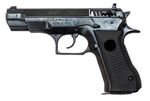
|
Semi-Automatic Pistol | 9×19mm | ||
|
Shotguns | |||||
| P-20 | 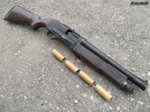
|
Pump-Action Shotgun | 20 Guage | ||
|
Service Rifles | |||||
| P-95 | Assault Rifle | 7.62×39mm | Primary service rifle of the Syaran National Army. | ||
| P-81 | Assault Rifle | 7.62×39mm | Primary service rifle of Syaran National Reserves | ||
| P-56 | 
|
Assault Rifle | 7.62×39mm | Assault rifle kept in storage for Syaran Strategic Reserves. | |
|
Machine Guns | |||||
| PH-250 | 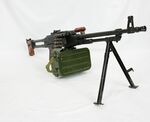
|
General Purpose Machine Gun | 7.62×39mm | ||
| Keshta | 
|
Heavy Machine Gun | 12.7×99mm | ||
|
Sniper Rifles | |||||
| PH-14 | 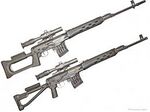
|
Sniper rifle | 7.62×39mm | ||
|
Additional weapons | |||||
| Xyston | 
|
Shoulder fired rocket launcher | 120mm | Most common unguided munition launcher in the SNA. | |
| Icarus | 
|
MANPAD | |||
| Falx | 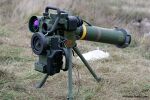
|
Anti-tank guided missile | Tandem-charge HEAT warhead | Most common ATGM utilized by Syara. | |
Armored vehicles
| Name | Image | Origin | Type | No. of Units | Notes |
|---|---|---|---|---|---|
|
APCs and IFVs | |||||
| Xanthus | 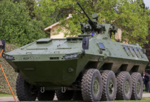
|
Multi-role AFV | 1,189 produced 2,300 on order |
New AFV produced in the aftermath of the Zemplen War. | |
| Aethon | 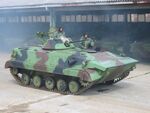
|
Infantry Fighting Vehicle | 4,235 produced | Standard IFV for the SNA. | |
| Balius | 
|
Infantry Fighting vehicle | 3,600 in storage | Relegated to storage and reserve units. | |
| Notos | 
|
Armored Personnel Carrier | 5,800 produced | Most common APC in the SNA. | |
| Phaethon | 
|
Armored Personnel Carrier | 4,400 produced | Light APC, doubles as a recon vehicle. | |
|
Main battle tanks | |||||
| Myrmidon | 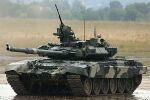
|
Main battle tank | 3,200 produced | Primary MBT of the SNA. | |
| Minotaur | 
|
Main battle tank | 4,400 produced | Relegated to reserve units before the Zemplen War brought it back to front line service. | |
| Manticore | 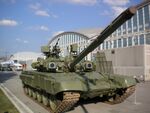
|
Main battle tank | 3,900 produced | Relegated to storage before the Zemplen War brought it back to front line service. No longer in active service. | |
|
Utlity and Logistics Vehicles | |||||
| Amaris | 
|
Multi-purpose tactical utility vehicle | 86,000 produced | Standard utility vehicle utilized by the SCAF. | |
| DCA truck | 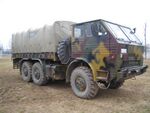
|
Cargo truck | 58,000 produced | ||
| DCA heavy truck | 
|
Cargo truck | 49,000 produced | ||
Air Defense
| Name | Image | Origin | Type | No. of Units | Notes |
|---|---|---|---|---|---|
|
Air Defense | |||||
| Pollux | 
|
SHORAD | 1,200 produced | Can be cofingured with either a 40mm anti-air cannon or four surface-to-air missiles. | |
| Daedalus | 
|
Mobile surface-to-air missile launcher | 850 produced | ||
| Calliope | 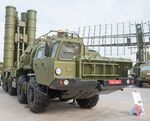
|
Long range strategic air defense system | 125 produced | ||
Artillery
| Name | Image | Origin | Type | No. of Units | Notes |
|---|---|---|---|---|---|
|
Towed Howitzers | |||||
| Porphyrion | 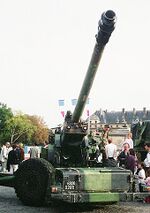
|
Towed 155mm howitzer | 3,000 produced | Relegated to reserve units and storage. | |
|
Self-Propelled Artillery | |||||
| Polycotes | 
|
122mm Self-Propelled Howitzer | 2,600 produced | ||
| Pallas | 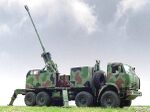
|
155mm Self-Propelled Howitzer | 3,300 produced | ||
|
Rocket Artillery | |||||
| Cerberus | 
|
Rocket Artillery | 1,800 produced | Can fire 107mm, 122mm, or 128mm rockets | |
Aircraft
| Name | Image | Origin | Type | No. of Units | Notes |
|---|---|---|---|---|---|
|
Helicopters | |||||
| Philomela | 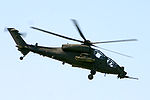
|
Attack helicopter | 346 produced | ||
| Acanthis | 
|
Utility helicopter | 944 produced | ||
| HH1 Attack Helicopter | 
|
Helicopter Gunship | 3 | Captured from the Imperial Armed Forces of Ruvelka during the Zemplen War. | |
| HH2 Attack Helicopter | 
|
Attack Helicopter | 2 | Captured from the Imperial Armed Forces of Ruvelka during the Zemplen War. | |
|
Unmanned aerial vehicles | |||||
| Autonous | 
|
UCAV | 345 produced | Can be armed with air-to-surface missiles or surveillance equipment | |
| Harpy | 
|
UAV | 220 produced | ||